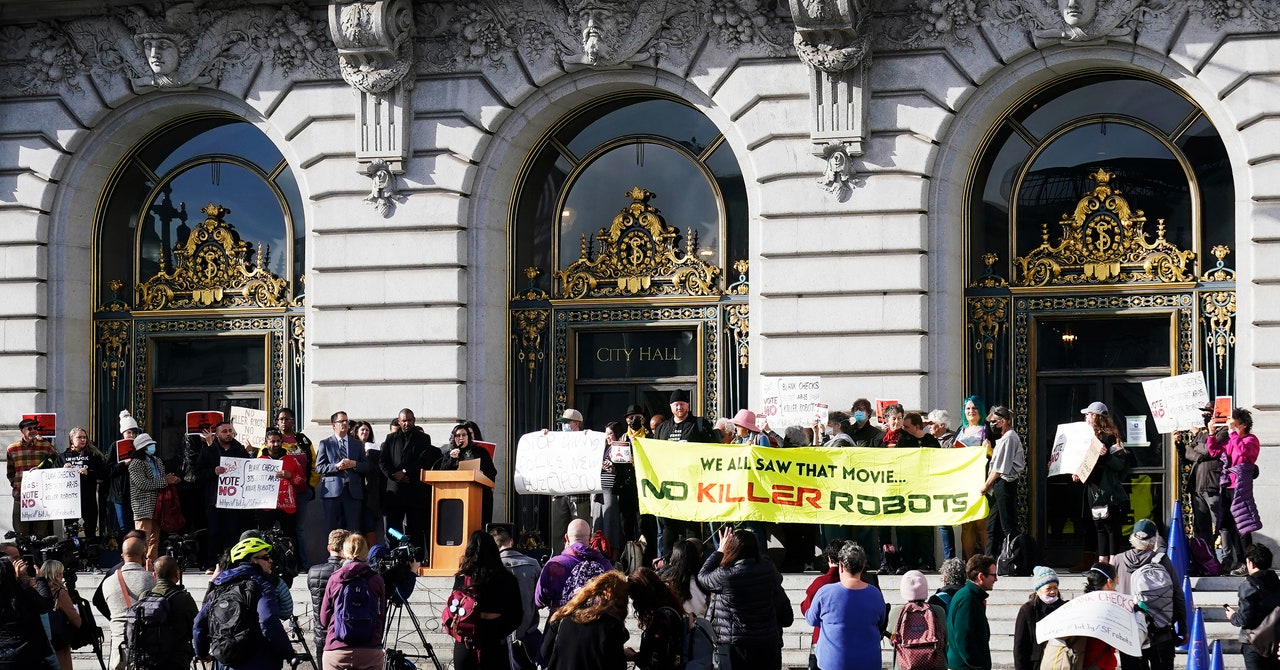“There are a whole lot of reasons why it’s a bad idea to arm robots,” says Peter Asaro, an associate professor at The New School in New York who researches the automation of policing. He believes the decision is part of a broader movement to militarize the police. “You can conceive of a potential use case where it’s useful in the extreme, such as hostage situations, but there’s all kinds of mission creep,” he says. “That’s detrimental to the public, and particularly communities of color and poor communities.”
Asaro also downplays the suggestion that guns on the robots could be replaced with bombs, saying that the use of bombs in a civilian context could never be justified. (Some police forces in the United States do currently use bomb-wielding robots to intervene; in 2016, Dallas Police used a bomb-carrying bot to kill a suspect in what experts called an “unprecedented” moment.)
The introduction of killer robots would also actively harm police forces’ ability to interact with the community in other ways, says Asaro. “There aren’t a sufficient number of applications where these things are going to be useful,” he says. Meanwhile, other areas where robots are important—such as in passing telephones and other items in hostage negotiations—would be tarnished with the suspicion that a phone-carrying robot could in fact be a gun-toting one.
But beyond the practicalities, there’s a more fundamental issue: Robots of any type, even if remotely controlled, shouldn’t be able to take human lives. For Aitken, the idea of even considering allowing robots to enact life or death decisions is flawed. “There is a clear disassociation between the action and the person making the decision,” he says. “It’s the human making the decision to take action, but the robot that would physically carry it out on the orders of a person who may—or may not—have a full appraisal of the situation.”
Supervisors in San Francisco who have decided to switch allegiances around the use of lethal force for robots have been welcomed by campaigners who sought to stop the decision being made last week. “Thanks to the passionate residents of the Bay Area and the leadership of supervisors Preston, Ronen, and Walton, the Board today voted against SFPD use of deadly force with remote-controlled robots,” says Electronic Frontier Foundation policy analyst Matthew Guariglia.
But it’s only a temporary reprieve: The supervisors will be reconsidering the decision at a later date, and they’re likely to find a similarly strong response, says Guariglia. “Should the Rules Committee revisit the issue, the community must come together to stop this dangerous use of technology,” he says.



